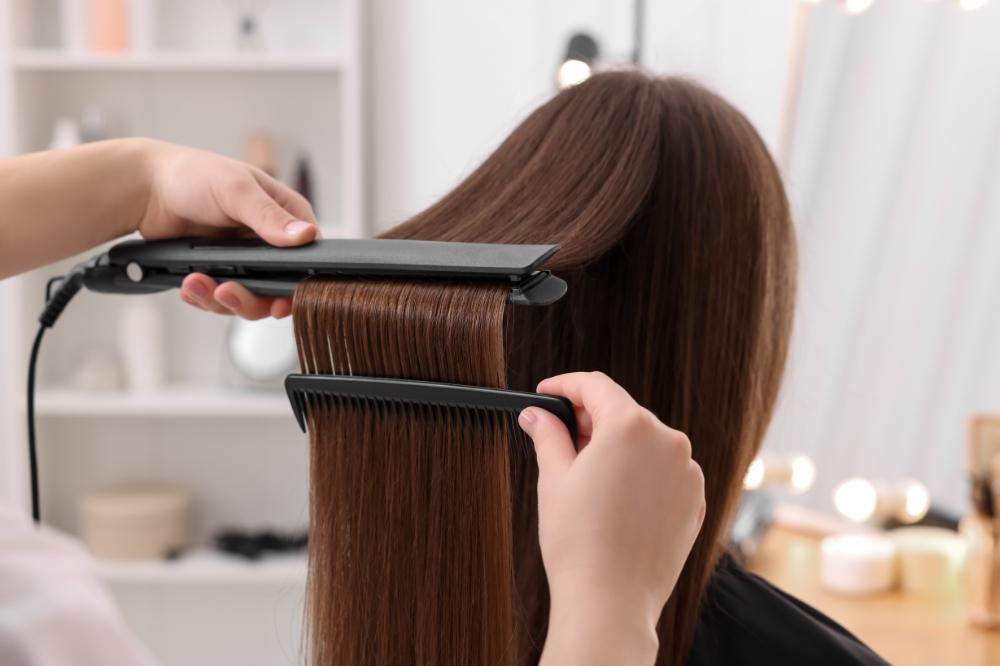Notifications

8 minutes, 4 seconds
-26 Views 0 Comments 0 Likes 0 Reviews

In the world of hair treatments, hair smoothening and hair straightening are two popular techniques aimed at transforming unruly, frizzy hair into sleek, manageable strands. However, while both treatments improve the texture and appearance of hair, they are fundamentally different in terms of technique, results, and long-term effects.
If you're unsure which treatment is right for your hair type, this guide will help you understand the key differences, benefits, and risks of both options — so you can make the best decision for your hair's health and style.
Hair smoothening is a semi-permanent chemical treatment designed to tame frizz, enhance shine, and make hair more manageable without completely altering its natural texture. It typically uses keratin, cysteine, or other smoothing agents to relax the hair’s structure gently.
The goal of smoothening is not to make the hair pin-straight but to reduce volume and frizz while maintaining a natural bounce and body. This makes it ideal for people who want sleeker hair without a dramatic transformation.
Hair straightening, on the other hand, is a more intense and often permanent process that uses stronger chemicals like sodium hydroxide or ammonium thioglycolate to break and restructure the hair bonds. The result is perfectly straight, flat, and ultra-sleek hair.
There are different types of straightening methods, including:
Chemical Hair Relaxing
Japanese Thermal Reconditioning (Rebonding)
Permanent Hair Straightening
Straightening is best suited for people who want a long-term solution with no curls or waves.
| Feature | Hair Smoothening | Hair Straightening |
|---|---|---|
| Hair Texture | Smooth, frizz-free, retains natural waves | Completely straight |
| Chemicals Used | Milder (keratin, cysteine) | Strong (lye-based or alkaline) |
| Effect Duration | 2 to 6 months | 6 months to permanent |
| Hair Health Impact | Less damaging | Can be harsh and damaging |
| Hair Type Suitability | Wavy, slightly curly, frizzy | Curly, thick, coarse hair |
| Natural Look | Maintains volume and bounce | Flatter, sleek finish |
| Post-Treatment Maintenance | Moderate | High (if hair regrows curly) |
Choosing between hair smoothening and straightening depends largely on your hair texture, health, lifestyle, and styling preference. Here’s how to decide:
If your hair is naturally wavy, puffy, or slightly curly, and you struggle with frizz and dryness, smoothening is your best bet. It softens the curls without removing them entirely and gives your hair a more natural and flowing look.
Ideal Treatments: Keratin or cysteine smoothening
Why? Less aggressive and maintains some volume
Tip: This is also a good option for professionals or students who want to reduce their styling time without committing to pin-straight hair.
For individuals with very curly or thick hair who want a dramatic transformation and don’t mind a pin-straight look, hair straightening might be more effective. It’s also suitable for those who find it difficult to manage their curls daily.
Ideal Treatments: Rebonding or chemical relaxing
Why? Stronger chemicals are needed to straighten tight curls
Caution: This method is more damaging over time and should be done sparingly.
If your hair is already damaged from coloring, bleaching, or previous treatments, opt for cysteine smoothening or avoid chemical treatments altogether. Harsh straightening chemicals can worsen breakage and lead to irreversible damage.
Tip: Always do a strand test and consult a professional stylist before choosing a treatment.
Natural-looking results
Less damage to the hair shaft
Easier styling and reduced frizz
Suitable for most hair types
Not suitable for very curly hair
Results last only a few months
Requires regular touch-ups for consistent texture
Permanently straight hair (until it grows out)
Ideal for unmanageable, coarse curls
Long-lasting with minimal maintenance for straight parts
Harsh chemicals can damage the hair
Regrowth can create an uneven texture
Hair may become flat and lack volume
Regardless of the treatment you choose, proper aftercare is essential to keep your hair healthy and prolong the results.
Use Sulfate-Free Shampoo
Sulfates can strip the treatment and natural oils, leading to dryness and fading results.
Deep Condition Weekly
Chemical treatments reduce moisture; replenishing it keeps hair soft and manageable.
Avoid Heat Styling
Minimize the use of curling irons, flat irons, and blow dryers to reduce breakage.
Trim Regularly
Regular trims help prevent split ends and maintain a neat look.
Protect From Sun and Chlorine
Use hair serums or leave-in conditioners when exposed to harsh sunlight or swimming pools.
From a hair health perspective, smoothening is generally considered safer due to the use of milder chemicals and fewer permanent changes to the hair's structure. However, even smoothening can cause dryness and breakage if not done correctly or if overdone.
Hair straightening carries higher risks, especially if done frequently, due to the irreversible nature of bond breaking and stronger chemicals.
To minimize damage:
Choose a professional salon with trained stylists
Always do a patch test before the treatment
Avoid back-to-back chemical treatments
Hair smoothening and hair straightening both offer incredible transformations — but the right choice depends on your unique hair type, texture, goals, and how much maintenance you're willing to commit to.
Choose smoothening if you want a natural, frizz-free finish with less risk and a soft, healthy look.
Choose straightening if you desire a dramatic, long-lasting change and are prepared to maintain it carefully.
No matter what you decide, always prioritize your hair’s health. Consult a trusted hairstylist, consider your lifestyle, and invest in proper aftercare to enjoy shiny, gorgeous hair — the way you like it.

